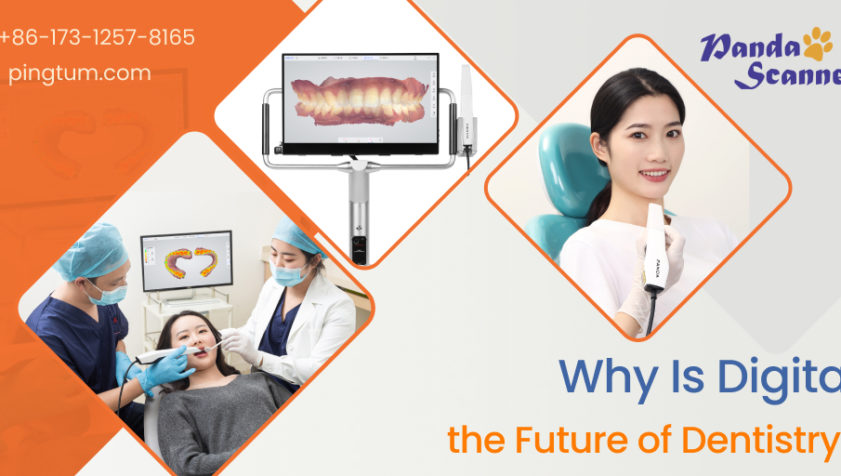Digitization has taken the world by storm. There is practically no realm that has remained untouched by it. Dentistry is one area where the advent of digital technologies has transformed the patient experience like never before. Technologies like powerful manufacturing tools, digital devices, software applications, aesthetic materials, and others have reshaped the world of dentistry. Among these technologies, 3D intraoral scanners have significantly enhanced the experience of dental professionals, technicians, and patients. Needless to say, digital dentistry offers substantial benefits in terms of time & cost savings, and quality. Let us understand them in detail:
What is digital dentistry?
Digital dentistry is about using advanced dental technologies or devices in the dental workflow for diagnosis and treatment. It is opposed to using mechanical or electrical tools and aims to increase the accuracy and efficiency of diagnosis and treatment. It leverages breakthroughs in scanning, imaging, manufacturing, and integrated software solutions to provide the best possible care. It is gradually replacing traditional procedures using minimally invasive techniques.
Digital Technologies Used in Digital Dentistry
The following devices are used in digital dentistry for diagnosis and treatment:
- Intraoral scanners
- 3D printer
- Cone Beam Computed Tomography (CBCT)
- CAD/CAM
- Digital radiography
- Digital X-rays
- Computer-aided implant dentistry
- Dental laser, and others

Why Is Digital the Future of Dentistry?
Digital technologies are considered to be the future of dentistry for the slew of benefits they offer. One of the devices that has transformed the world of dentistry is the intraoral scanner, which takes digital impressions of the teeth and gums. After the introduction of this device, the diagnosis and treatment of dental conditions have become easy and quick. The reasons why dental professionals should switch to digital dentistry include:
Ease of use and precision: Traditional dental procedures can be fraught with errors and can take a lot of effort and time to get the right results. Digital dentistry, on the other hand, can significantly reduce uncertainties and errors mostly owing to human factors, and offer precision output at every stage of the end-to-end procedure. For instance, 3D intraoral scanners allow digital impressions to be taken easily. They show a clearer picture of the teeth structure in real-time and facilitate accurate results. CAD/CAM tools that are integrated with the dental scanner can help in identifying and mitigating errors. For complicated dental cases, if the dentist is not happy with the available digital impression, he or she can take a rescan within seconds. This is way better than how traditional scanning is done.
Better comfort and patient experience: Traditional impression-taking procedures can be very unpleasant for the patients. This is because they have to hold on to the impression materials tightly by clinching their teeth. This can lead to issues like gagging, swallowing, or even worse. A dental scanner comes with a probe, which when inserted into the patient’s mouth, scans the details of teeth and gums, and displays the same on the monitor. Both the patient and dentist can view the images in real-time. Even if patients do not understand a thing about the procedure after viewing the images, they feel that the overall experience is comfortable and efficient. This increases the confidence and trust of the patient in the dentist and clinic, often resulting in a return visit.
Saves time and cost:Digital dentistry can streamline the workflow in a dental clinic and improve efficiency. The time saved in taking impressions and preparing implants/dentures/restorative solutions can reduce chair time compared to the conventional method. This minimizes or eliminates the cost of impression materials and their shipment to the dental laboratories.
Conclusion
The world of today is defined by speed, quality, and efficiency or at least that is what customers or patients in dentistry tend to believe in. With competition in dentistry increasing like in other spheres, going digital has become the right way to stay competitive. Digital technologies can be adopted for any new dental procedure with the added advantage of accuracy and agility. As a dental professional, should you want your dental clinic to touch the fast lane and ensure for your patients the best possible procedure for diagnosis and treatment, digital is the way to go.






